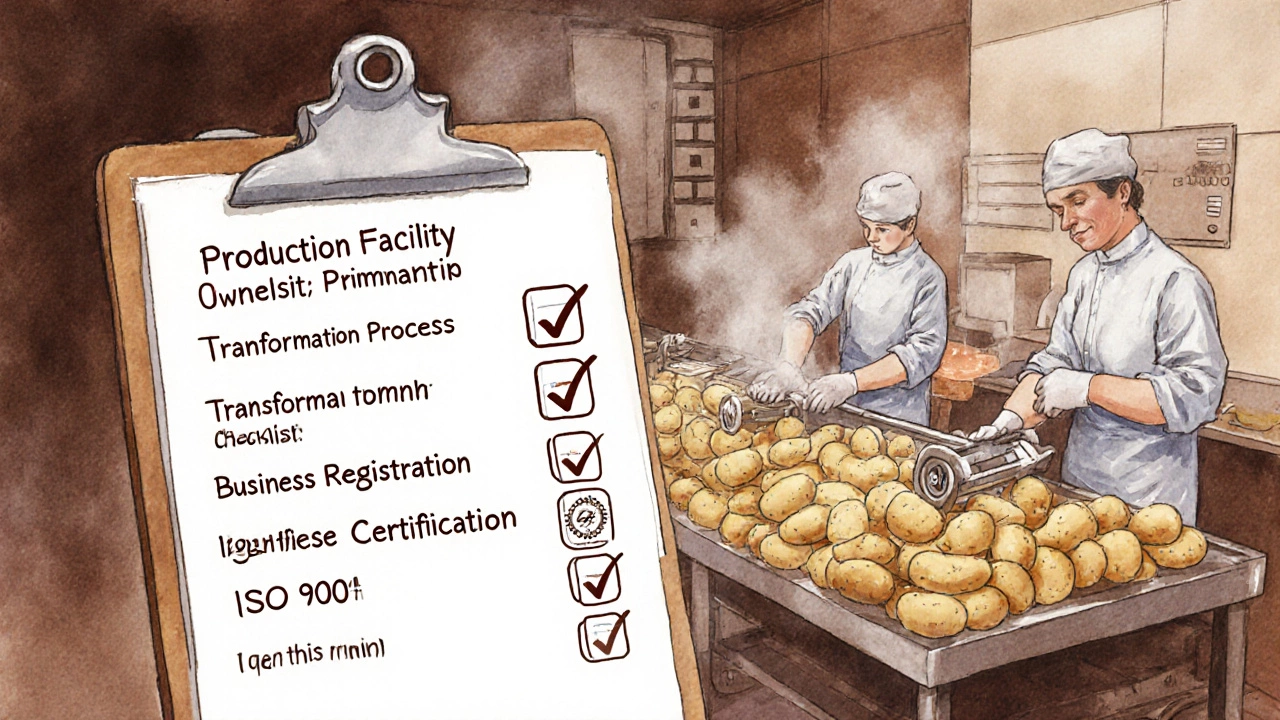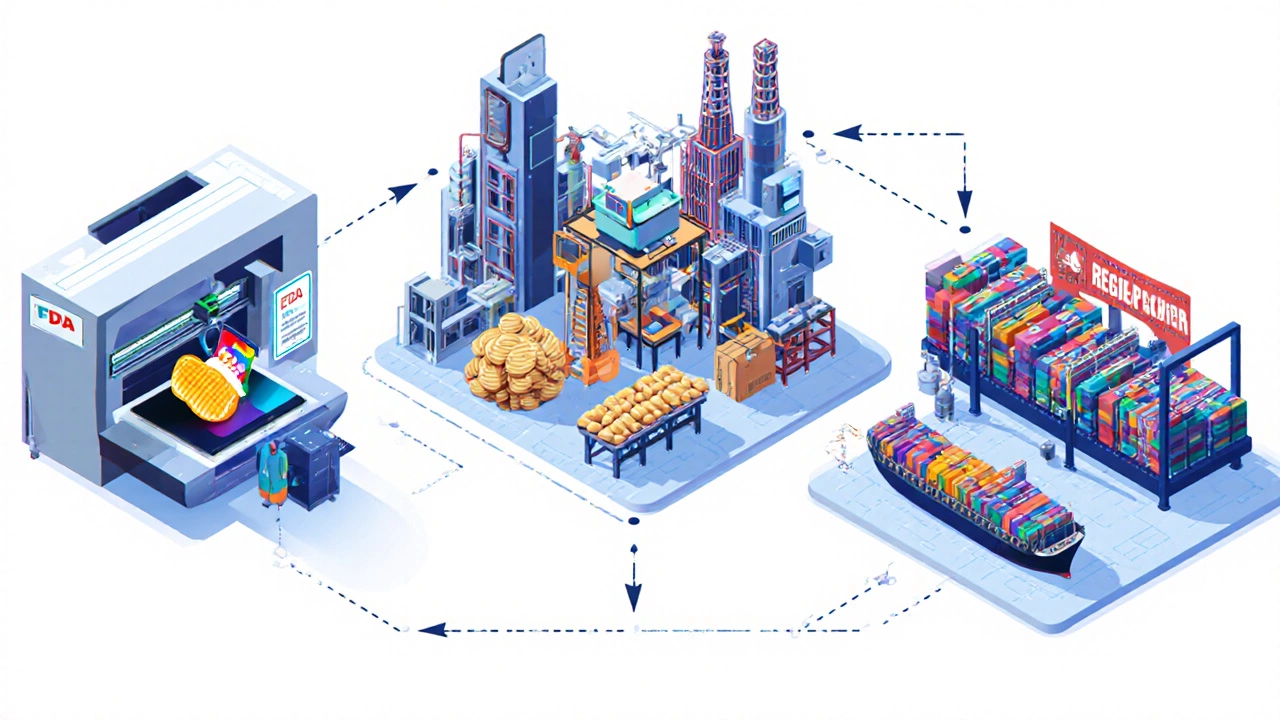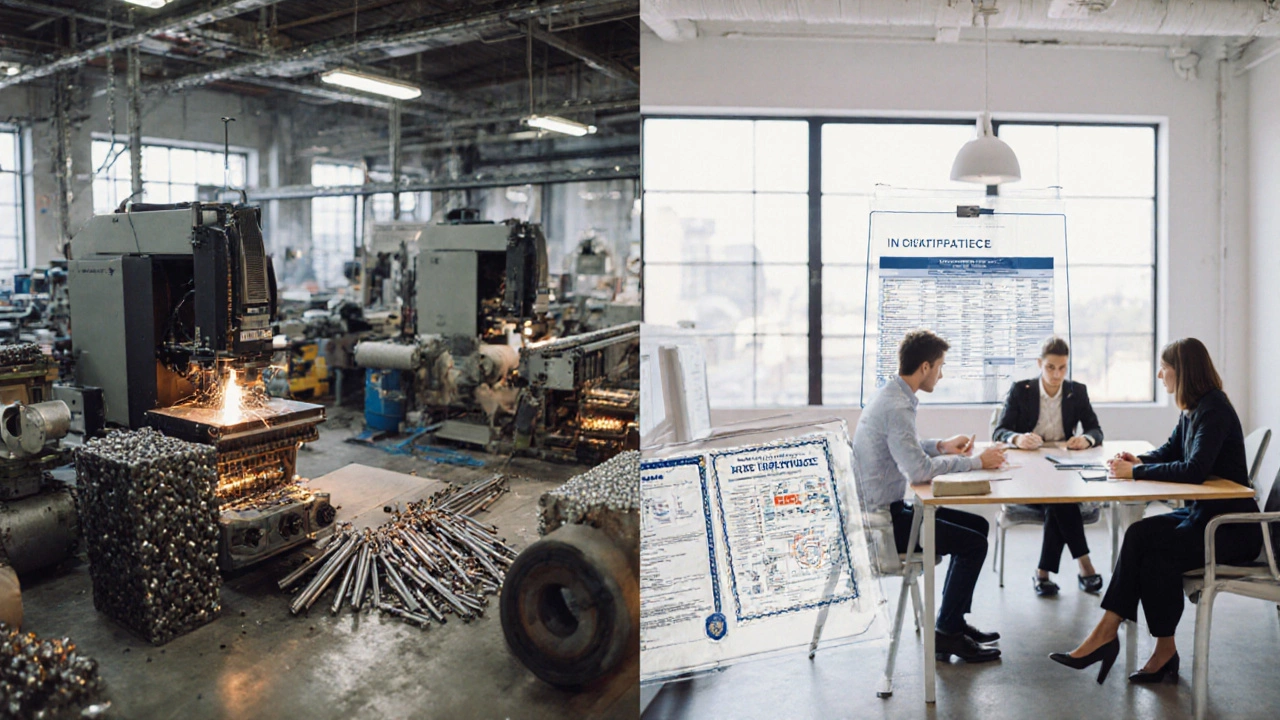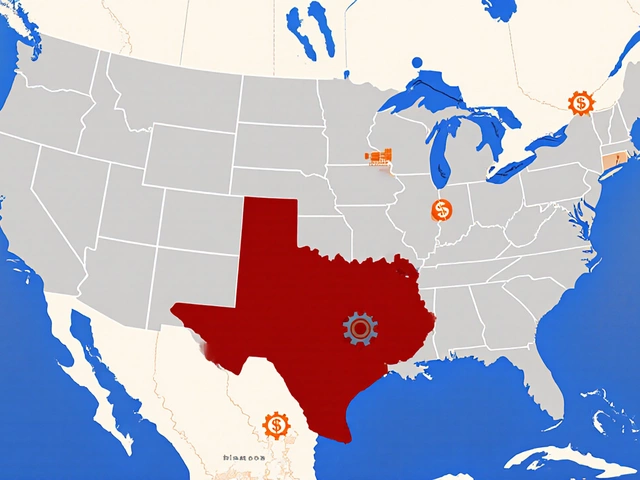Manufacturer Qualification Checker
Use this tool to evaluate whether your business meets the essential criteria for being classified as a manufacturer. Answer the questions below to get a personalized assessment.
Production Facility
Does your business own, lease, or have exclusive operational rights over a production facility where goods are transformed?
Transformation Process
Does your business involve a physical, chemical, or mechanical change that adds value to raw materials?
Business Registration
Is your business properly registered with the relevant authorities (e.g., company incorporation, partnership deed)?
Regulatory Compliance
Are you compliant with applicable licenses, certifications, and permits required for manufacturing?
Tax Classification
Is your business correctly classified under the appropriate tax code for manufacturing?
Supply Chain Control
Do you control the supply chain from sourcing to distribution?
Your results will appear here after clicking the button above.
Ever wonder why some businesses call themselves manufacturers while others don’t, even though they both produce goods? The line isn’t just marketing fluff - it’s drawn by law, tax rules, and industry standards. Pinpointing what actually qualifies a company as a manufacturer definition helps you avoid compliance headaches, claim the right incentives, and speak the same language as regulators.
Key Takeaways
- A manufacturer must own or control a Production Facility that transforms raw materials into finished goods.
- Legal registration, applicable Regulation, and tax classification are essential checkpoints.
- Ownership of the Supply Chain - from sourcing to distribution - strengthens the manufacturer label.
- Common misconceptions include equating "assembly" with full‑scale manufacturing or ignoring licensing requirements.
- Real‑world case studies illustrate how small‑scale workshops become recognized manufacturers under the right conditions.
Legal Definition and Core Attributes
Under most jurisdictions, a Manufacturer is defined as an entity that engages in the systematic conversion of raw inputs into market‑ready products using its own facilities, equipment, and labor. This definition implies three non‑negotiable attributes:
- Control of a Production Facility - The business must either own, lease, or have exclusive operational rights over a location where the transformation occurs.
- Process of Transformation - Simple repackaging does not count; there must be a physical, chemical, or mechanical change that adds value.
- Legal Registration and Compliance - The entity needs a valid Business Registration (e.g., a company incorporation or partnership filing) and must meet sector‑specific regulatory standards.
These pillars are referenced in the U.S.Code §471, the European Union’s “Manufacturing Directive,” and India’s “Factory Act, 1948.” Ignoring any of them can strip a company of its manufacturing status.
Checklist of Qualification Criteria
| Criterion | What to Verify | Typical Evidence |
|---|---|---|
| Production Facility Ownership/Control | Lease, deed, or exclusive operational agreement | Lease contract, property tax receipt, facility audit report |
| Transformation Process | Documented SOPs showing material conversion | Process flowcharts, quality‑control logs, engineering specs |
| Business Registration | Valid company registration number and statutory filings | Certificate of incorporation, partnership deed, GST registration |
| Regulatory Compliance | Applicable licences, safety certifications, environmental permits | ISO9001, CE marking, EPA permit, factory licence |
| Tax Classification | Correct classification under tax code for manufacturing | Form 27A (India), NAICS31‑33 code (U.S.), VAT‑eligible status |
| Supply‑Chain Integration | Control over sourcing, production, and distribution | Supplier contracts, inventory management system, logistics contracts |

Registration, Licensing, and Industry Standards
Getting the paperwork right is often the trickiest part. Here’s a step‑by‑step guide you can follow:
- Choose the proper Industry Standard code for your product line (e.g., NAICS 311 for food processing, NAICS 332 for metal fabrication). This code determines the tax brackets and eligible incentives.
- File the Business Registration with your local corporate affairs office. Include details of the production address and the nature of activities.
- Apply for specific manufacturing licences. For example, a textile workshop in Bangladesh needs a “Textile Manufacturing Licence” from the Ministry of Textile, while a chemical plant in Germany requires a “Betriebserlaubnis” from the Federal Office for the Environment.
- Secure safety and quality certifications. ISO9001 (quality management) or ISO14001 (environmental) are almost always expected by buyers and insurers.
- Register for tax incentives tied to manufacturing, such as the U.S.“Section179 deduction” or India’s “Accelerated Depreciation for Plant & Machinery.” These benefits only apply when the entity is classified as a manufacturer.
Missing any of these steps can lead to a “partial‑manufacturing” status, where the business is treated as an assembler or trader rather than a full‑scale manufacturer.
Tax Treatment and Financial Incentives
Governments love manufacturers because they create jobs and boost exports. Consequently, many tax codes embed special treatments:
- Depreciation Accelerations - Capital equipment can be written off faster, reducing taxable income in the first few years.
- R&D Tax Credits - If your production process involves innovation, you may claim a credit up to 30% of qualified expenses.
- Export Incentives - In the EU, the “Export Refund Scheme” refunds a portion of VAT on goods shipped abroad.
- State/Regional Grants - Many regions offer grants for setting up a new Production Facility, especially in under‑developed zones.
To unlock these perks, you must prove your manufacturer status with the documentation listed in the checklist above. Tax auditors often cross‑reference the NAICS or NACE code, licence numbers, and facility ownership documents.
Common Misconceptions to Avoid
People often mistake “assembly” for full manufacturing. Assembly typically involves putting pre‑made components together without altering their material composition. If your business only does that, you’ll likely be classified as an “assembler” and miss out on manufacturer‑specific benefits.
Another myth: “Having a large warehouse makes us a manufacturer.” A warehouse is a storage hub, not a production site. Without a dedicated place where raw inputs become finished goods, you cannot claim the label.
Lastly, some think that foreign‑owned firms cannot be manufacturers domestically. Ownership nationality isn’t a barrier; what matters is where the production occurs and whether local regulations are met.

Real‑World Examples Across Scales
Example 1 - A Home‑based 3D‑Printing Studio - Jane started printing custom phone cases in her garage. She registered a sole proprietorship, obtained a small‑scale manufacturing licence from her city council, and filed under NAICS321999 (Custom Wooden Product Manufacturing). Because she controls the printing equipment, transforms PLA filament into a new product, and complies with safety standards, she is legally a manufacturer.
Example 2 - A Mid‑Size Food Processor - A family‑run company in Texas buys raw potatoes, washes, peels, slices, and packages potato chips. They own a 15,000‑sq‑ft plant, hold a Food and Drug Administration (FDA) Food Facility Registration, and have ISO22000 certification. Their tax filings list NAICS311811 (Cookie and Cracker Manufacturing), qualifying them for state manufacturing tax credits.
Example 3 - An International Textile Exporter - A Bangladesh firm imports cotton, dyes it, weaves fabrics, and ships finished garments overseas. They have a factory licence from the Ministry of Industries, a registered GST number, and are classified under NACE13 (Textile Manufacturing). These credentials let them claim export‑refund schemes under the EU‑Bangladesh Trade Agreement.
Each case shows that the common denominator is control over a production process, proper registration, and compliance with sector‑specific regulations.
Quick FAQ
Frequently Asked Questions
Do I need a separate licence if I already have a business registration?
Yes. Business registration proves the legal entity exists, but manufacturing licences confirm you meet health, safety, and environmental standards specific to producing goods.
Can an outsourced production line make me a manufacturer?
If you only contract a third party to finish the final assembly, you remain an assembler. To be a manufacturer, you must own or control the facility where the core transformation happens.
What NAICS code should I use for a mixed‑product workshop?
Choose the code that reflects the majority of your output. If 60% of revenue comes from metal parts, NAICS332 (Metal Manufacturing) is appropriate, even if you also produce plastic components.
How does the “manufacturer” label affect export duties?
Many trade agreements grant reduced duties or duty‑free status to locally manufactured products. Proving manufacturer status with the right licences and NAICS/NACE codes is essential to claim these benefits.
Is a home bakery considered a manufacturer?
If the bakery transforms raw ingredients into finished baked goods on its own premises and holds the required food‑handling permits, it qualifies as a food‑manufacturing operation.
Understanding these nuances saves time, money, and legal trouble. Once you check the criteria, lock in the licences, and align your tax code, you’ll confidently market yourself as a legitimate manufacturer and unlock the perks that come with it.






